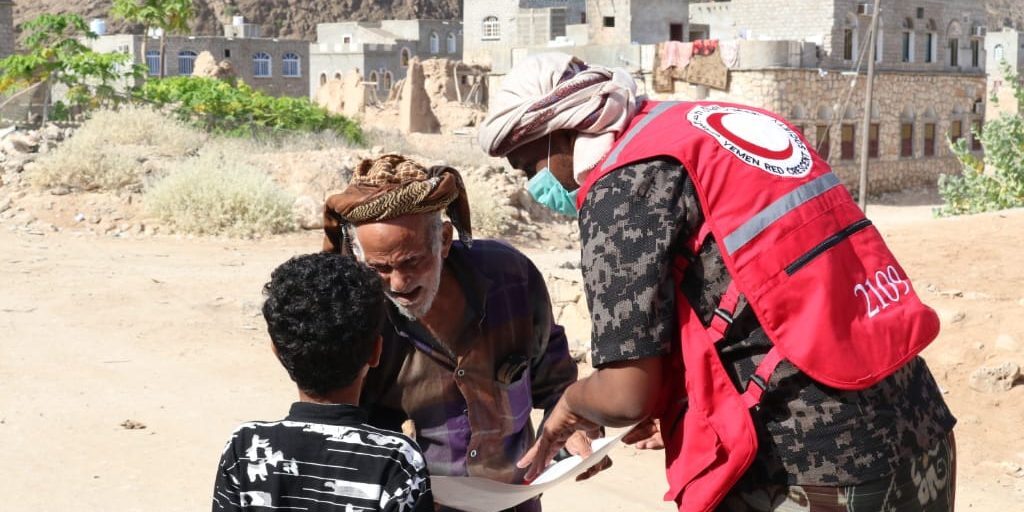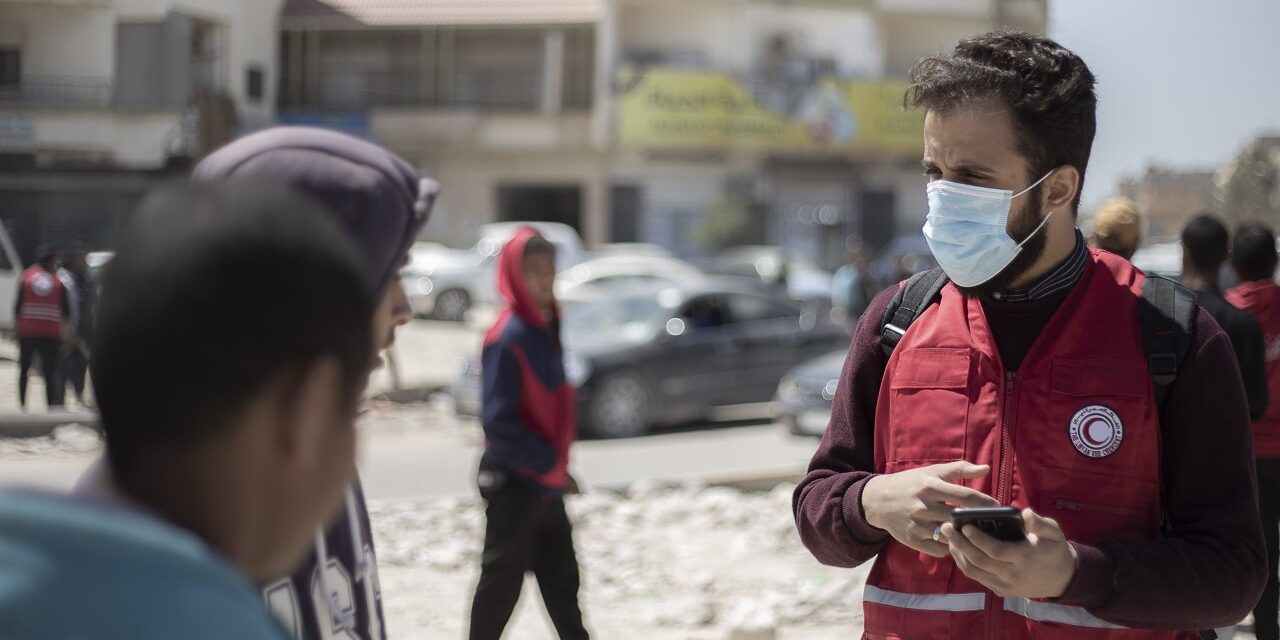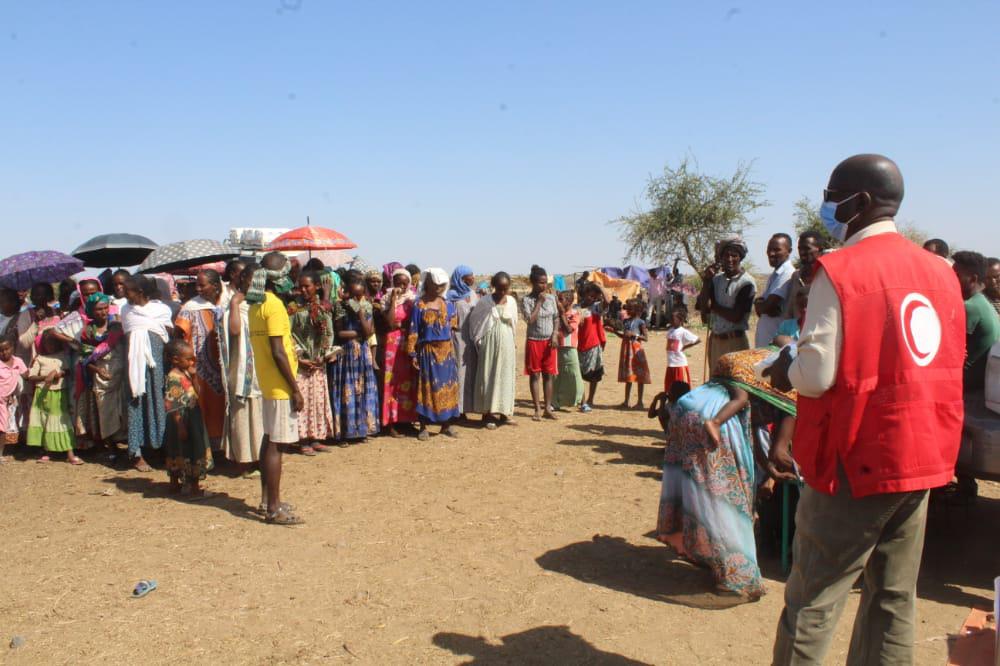Community Engagement and Accountability

Overview
Community Engagement and Accountability is more than an idea – it is a commitment.
Community engagement and accountability is a way of working that recognises and values all community members as equal partners, whose diverse needs, priorities, and preferences guide everything we do. We achieve this by integrating meaningful community participation, open and honest communication, and mechanisms to listen to and act on feedback, within our programmes and operations. Despite the increased urgency and complexity of a migration and displaced crisis, it is still important, necessary, and possible to engage population on the move as well as the host communities. This module outlines the key minimum actions for community engagement and accountability in a Migration emergency response operation that can be operationalized at an HSP, and how to go further if time, capacity, and resources allow. It also highlights the common barriers and challenges to be aware of, as well as the factors that can help to support an accountable response.
The Movement-wide Minimum Commitments for Community Engagement and Accountability (CR/19/R1) were adopted at the Council of Delegates on 08 December 2019. These overarching, strategic commitments aim to ensure a consistent approach to how we engage with and are accountable to people and communities across the Movement. All members of the Movement, including every National Society, ICRC delegation and IFRC office, are responsible for meeting and upholding these commitments and they are relevant and applicable to all staff and volunteers regardless of their role.
Key Commitments on CEA include:
Migration Contexts: Special Challenges
Communicating with and engaging migrants can be challenging, particularly on rapidly moving migration routes.
These challenges are often compounded by language and cultural barriers.

Migrants also have many concerns they prioritize over giving input into or feedback on programmes.
Often, they are travelling long distances and navigating a complex range of issues, including their current survival – food, shelter, clothing, and protection – onward transport, legal documents, and maintaining contact with family and community members. They may feel no sense of ownership in the programmes that we offer. Importantly, they may see no point in complaining about the quality of services or even about exploitation or abuse, particularly if they expect to move on soon.
Some of these issues can be addressed, while others can only be worked around.
It is highly recommended that a CEA focal point is consulted about the best ways to look at how to do this.
There are also a number of examples of how the RCRC is already tackling these issues when working with migrants, including through the AmiRA programme in West Africa and, in conjunction with other actors, through the Regional Safe Spaces Network in the Americas.


How is CEA operationalised at HSP?
This toolkit cannot give step-by-step guidance to every aspect of CEA at HSPs, particularly as this will need to be adapted to the specificities of the context and situation.
Indeed there are key practical CEA actions that you can take during Migration and Displacement emergency operations to help it run as smoothly as possible by ensuring a good level of engagement with communities including migrants on the move and host communities.
For more information on CEA in emergencies and tools, see Module 5 in the CEA guide.
Tips!
The HSP offers the possibility of gathering migrant population and host community members. It is a space where you can implement additional tools to collect feedback and offer practical solutions to share information with the community. The following tools are explained in other documents. We offer a brief overview as part of the suggestions for National Societies on collecting feedback.

Anticipate Change
Migration contexts are constantly changing, and HSPs need to adapt rapidly. Monitor and consult constantly to ensure you are on top of the latest developments, including how people want to receive information and to communicate with you.
Engagement and accountability requires trust
The single most commonly repeated tip for engaging migrants is to have other migrants doing the outreach. People are most likely to speak openly and with confidence with people like them, who share a gender, age group, ethnicity or culture and language.
Resource your CEA systems
Feedback and complaints mechanisms aren’t finished when you have put them in place – they need to be monitored, followed up, and continually refreshed. Information management and analysis are also needed to ensure that information is being effectively responded to.
Use multiple forms of communication
Experience shows that most people prefer face-to-face communication, and that this is what migrants trust most. However, this is not always the case, and sometimes not even possible. Consult people about what the best way is for them to communicate with you to inform programming and to make complaints, including sensitive complaints. Bear in mind that people may want to use different ways of communicating depending on what they want to say, and that that men, women, girls and boys will all communicate differently. Consider as well that many people are not comfortable with the word ‘complaint’ and you may need to find more culturally acceptable ways for them to express concerns.
Systematically collect informal feedback
Informal feedback is particularly important in HSPs. People are often moving through rapidly, and giving you feedback is not their priority. It can also be difficult to follow up feedback and complaints. Informal feedback is also a way of addressing the issue that migrants can be uncomfortable with formal systems that require them to share their names or other information. Informal feedback can be captured on systems with which staff and volunteers are probably already familiar, such as ODK and Kobo.
Red Data
Temporal access to data / Internet can be offered at the HSP to provide migrants and host community members with this service. To enter this Red Cross network, the user will be given access to a home web page where he/she can learn relevant information, provide feedback and get contact information of relevant services or organizations.
'I want to tell my story' Audio Booth
This booth can be set up next to the HSP, where migrant persons or host community members can record an audio message, story or feedback. The idea is to collect feedback and life stories to help raise awareness of the situation of migrants and the transit and host communities. For more information, please refer to the specific document.
Keep track of rumours
Sometimes the rumours that are circulating online or by word of mouth will tell you more about people’s needs, experiences, concerns and fears than anything they will tell you directly. Don’t dismiss rumours, but instead find ways to look into them and find out what lies behind.
Key Resources

